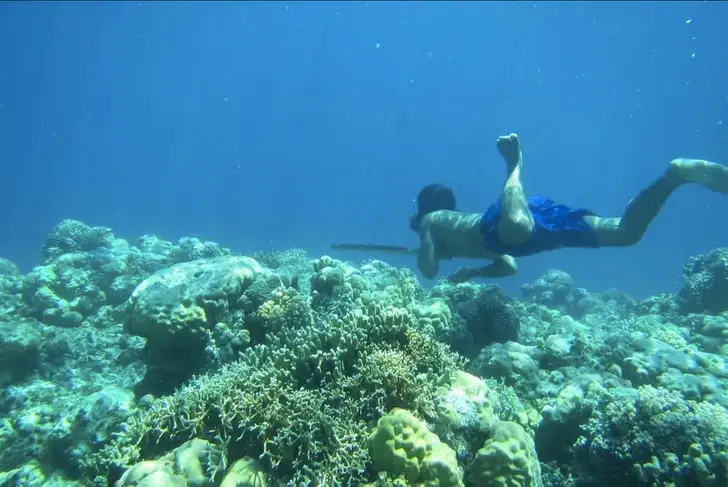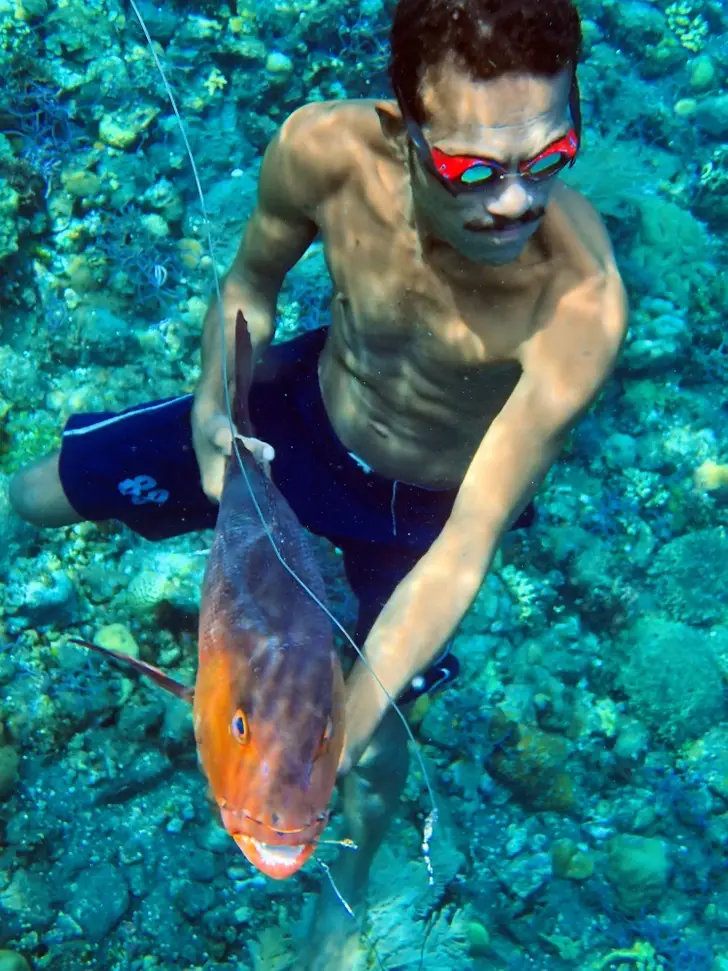
Hoga Island and the Bajau people
It was while we were at Hoga Island that we met Danny. (www.hogaislanddiveresort.com)
He arrived on his little boat he brings to life with a crank handle i have only ever seen used in old movies.
He invited us to the village where he lives with his family and friends and introduced us to his life as a Bajau
These little known Nomadic race of people, also called Sea Nomads, or Sea gypsies, or just Bajau people have historically lived throughout Indonesia, the Phillipines and Malaysia for, like, ever....
Previously they lived purely on the sea in their little boats, but in the last few years have integrated into land based communities on houseboats or stilted house villages like this one we went to.
Living a very traditional life, they are known as exceptional free divers allowing them to spend a lot of their time catching fish.
All around these islands, we could spot their small boats scattered across the water. Quite often, anchored on a reef and more frequently than not, empty.
Why? Because the Bajau freediver is often beneath the surface, hunting fish with nothing but a spear in hand!
No goggles, no oxygen tanks, no wetsuits or fins—just a pair of speedos and a spear. I bloody love that !!
What fascinates me even more is that, over the generations, their bodies have developed extraordinary genetic adaptations due to their prolonged time underwater and the depths they explore to hunt fish
It's almost unbelievable—a sort of "half-human, half-fish" situation....
One remarkable adaptation is their enlarged spleens, which allows them to store more oxygen-rich red blood cells, giving them the ability to dive and stay underwater for extended periods. Even more astonishing, Bajau children are born with the ability to see clearly underwater. Its so interesting!
The Bajau people have lived in harmony with the sea for many generations, but these communities are now embracing a more settled lifestyle integrating with land-based societies and exploring diverse economic opportunities.
Take Danny, for example. He found a way to earn a living by engaging with rally boats like us, offering unique experiences such as village tours, lunch trips, little gifts hand made by the kids, and, of course, freshly caught fish straight from the ocean floor.
However, the Bajau people do face immense challenges - from the devastating effects of plastic pollution to the relentless pressures of modernization or so called "progress"
Amid this vast expanse of ocean, they are powerful symbols of resilience and self-reliance. Yet, like many indigenous communities, their struggles intensify on land. When they come ashore, they are often marginalized, relegated to the lowest tiers of society. Their statelessness excludes them from essential government services—denying children access to public education and leaving adults unable to obtain formal employment.
Danny warmly welcomed us to his village home, where we had the pleasure of meeting his children, the village kids, and his family. His wife generously prepared a delicious homemade meal for us.
As you can see from the photos, we were certainly well-fed. Every dish was made with fresh ingredients, either caught from the sea or prepared on the spot. We even had the chance to try freshly brewed arak, the white spirit made from palm tree leaves. Who needs Bintang?? (Indonesian equivalent of Fosters)
Spending time with Danny’s family and witnessing their traditional way of life was a humbling experience. From what I understood, the villagers receive no government support, and many have never had access to education. Despite this, they have built small schools and places of worship from whatever materials they could find, a testament to their resilience and determination to improve their lives.
Danny has been able to earn some extra income, primarily because he speaks a bit of English. The villagers also encouraged their children to interact with us, as a way to help them practice and improve their language skills.
Thanks to Danny’s additional earnings, his home stood out in the village. It had a spacious balcony with ceramic tiles and a few chairs, a noticeable step up from the simple wooden platforms with mattresses that many others had outside their homes.
Once again, this trip was incredibly thought-provoking and left a lasting impression on me.
For me, travel isn’t about ticking off landmarks and sightseeing, It’s about connecting with people and learning about the diverse ways in which they live their lives.
As we wandered through this village, I was reminded of similar experiences in Cooktown, the Tuamotus, and Fiji. Time and again, I find myself struck by the same observations. The children here were happy and healthy, running riot in the makeshift "streets" - actually - wooden planks, some rickety and very unsafe.
Their laughter echoed through the village as they ran freely, vaguely supervised by watchful women and families on their balconies. From above, the hum of chatter and shared labor filled the air—mothers and families working side by side, crushing chilies and chopping onions in preparation for the evening meal.
Here, there were no computer games, no glowing screens or kids tethered to tablets in strollers while distracted parents lost themselves in their phones.
This was a community built on simplicity, self-reliance, and deeply cherished traditions.
I couldn’t help but think— but if given a choice I would gladly embrace and prefer the richness of a life like this

















Add comment
Comments